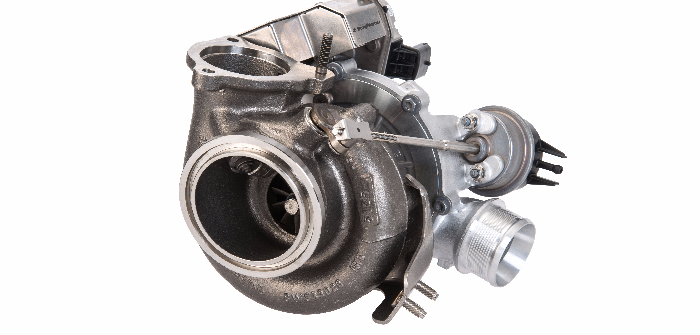BorgWarner has developed specialized variable turbine geometry (VTG) turbochargers for a broad range of gasoline-powered vehicles. Developed specifically to match new combustion systems, as well as hybrid applications, the company’s solution is a ‘core component of clean and efficient future propulsion systems’, according to BorgWarner.
The units are said to combine cost efficiency and performance through the optimized design and material specification of its new gasoline VTG turbocharger. Ten years after having introduced the world’s first mass-produced gasoline engine boosted by a VTG turbocharger in cooperation with a German premium sports car manufacturer, BorgWarner’s gasoline VTG has entered the mass market successfully.
“Regarding the ever-increasing requirements in efficiency and emissions, BorgWarner forecasts great market potential for our leading gasoline VTG technology,” said Frédéric Lissalde, president and general manager, BorgWarner Turbo Systems. “By adapting our advanced solution for the mass market, we drive downsizing and downspeeding to support our customers in developing clean, economical and powerful future vehicles, and we expect to further strengthen our attractiveness as a leading supplier of innovative turbocharging solutions.”
BorgWarner optimized the materials and the design of its VTG turbocharger for higher resilience to withstand the high thermal loads of a gasoline engine and allow reliable operation even under the toughest conditions. In addition, the latest VTG technology features a robust electric actuator that controls the pressure upstream of the turbine, rapidly and precisely adjusting the guide vanes for nearly instant acceleration and optimum power output.
By changing the inflow angle and speed at the turbine wheel inlet, BorgWarner’s patented S-shaped guide vanes regulate the VTG turbine output, improving thermodynamics and engine response at very low rpm. The advanced gasoline VTG technology enables excellent response and smooth power delivery while enhancing fuel efficiency and reducing emissions for a wider range of vehicle segments.


